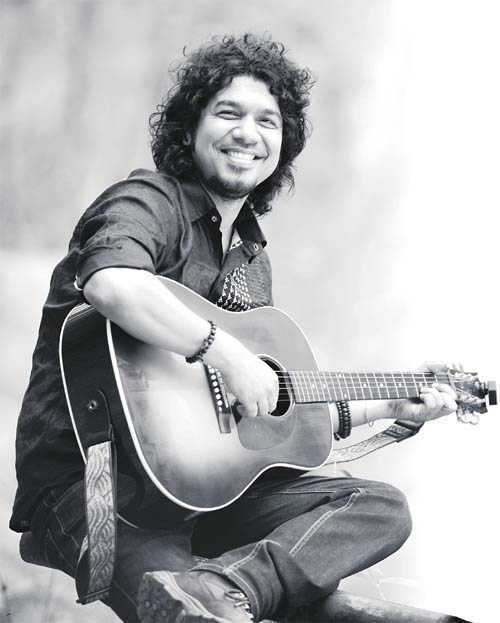I met SK Singh, the then president of the Assam Sikh Association, in 2003. He could instantly connect. I, an Assamese in the Sikh land, and he a Sikh in the Assamese land!
His status, however, was not that easy to define. An Assamese Sikh, a proud bearer of an important chapter of history, he is yet to establish his identity, both in the land of his origin as well as in the land where Sikhism emerged. His heart-felt words rang in my mind as I recently read the news of the Assamese Sikh community making a fresh demand for the minority status in the state. “It hurts when we are called ‘duplicate Sikhs’ or ‘second-class Sikhs’ by our counterparts in Punjab,” he had said.
What had saddened Singh more than the identity crisis was the political neglect. A member of the smallest minority in the region, with about 12,000 people scattered across three assembly constituencies in Nagaon district, Singh has been fighting for the minority status for a long time. Mostly farmers and settled in the flood-prone area, the community thinks that it deserved reservation in higher education and government jobs. But, then, they are too small a community to catch any political party’s attention.
The settlement of this community in Assam can be traced to the third Burmese attack in 1821when King Viswanarayan Singh of the Ahom tribe sought Maharaja Ranjit Singh’s help to defeat the Burmese army. It was around that time that 500 soldiers were sent to Assam under the leadership of Chetan Singh. They crossed the Brahmaputra and Kalang rivers and reached Chaparmukh. After defeating the Burmese, most of them settled there.
General Chetan Singh died in the war but his wife, known as ‘Mataji’, survived. Most of the Sikhs of Assam are descendants of Chetan Singh’s army. Whatever might have been the reason, here is a community comprising Mongoloid-featured men wearing turbans and sporting sparse beard and woman wearing traditional Assamese mekhela chaddar and carrying a small kirpan.
They celebrate both Magh Bihu and Lohri, which fall on the same day. With equal enthusiasm, they celebrate both Gurpurb and Shankar Dev’s tithi.
They prefer to call themselves, ‘the Assamese who follow the Sikh religion’. They have proved quite good at that. They may not practise Gurmukhi in day-to-day life, but they follow the Guru Granth Sahib in its true spirit. And most of the community is Amritdhari, as it is a custom to partake of amrit before getting married.
In tune with time
For the rest of the year, Angaraag ‘Papon’ Mahanta belongs to the Hindi music world, but come April and he is completely connected to his roots. April is the month of Bohag Bihu. Bihu, for him, is the most vibrant and unique festival. Unique, because of the way all sections of people in Assam, especially the youth, connect with it.
Outside Assam, most people may mis-pronounce his name as Pepon (it’s pronounced Paapon), but they sure connect to his Bollywood hits like Jiyein Kyon (Dum Maro Dum), Sun le re and Khudse (Madras Café), Kyon (Barfi) and Humnava (Hamari Adhuri Kahani).
Son of singer Khagen and Archana Mahanta, who gave Assamese folk a much-needed direction, Papon attributes the earthiness of his voice to his father’s genes and the classical base to his mother’s grooming.
Papon is following in his father’s footsteps. This singer-composer, who is trained in Hindustani classical, borgeet (devotional) and folk, has been busy reviving the folk music through his band East India Company. “I would like to explore folk music of the entire Northeast, but the field is vast. And hopping between Bollywood and regional music leaves me with very little time,” he rues. But, then, who is complaining, especially if his forthcoming projects read Sultan and Raaz 4!
Give us a chance too
Kaziranga is in the news for all the wrong reasons. Last month as the national park hosted the British royal couple, Prince William and Princess Kate Middleton, poachers gunned down a rhino and decamped with its horn, 20 km from where the royal guests were staying. A cash-starved, direction-less Kaziranga where forest guards triple up as guard, driver and cook, is vulnerable to poachers who attack with sophisticated weapons. The one that got killed on the night of April 15 was the sixth prey this year.
Now, the All-Assam Students Union has asked Prime Minister Narendra Modi to take effective steps to check the menace. Probably the AASU should take a cue from Haryana, where ministers are spending a sizeable portion of the tax-payers’ money on protecting cows, and declare rhinos as holy.
Unlock Exclusive Insights with The Tribune Premium
Take your experience further with Premium access.
Thought-provoking Opinions, Expert Analysis, In-depth Insights and other Member Only Benefits
Already a Member? Sign In Now










